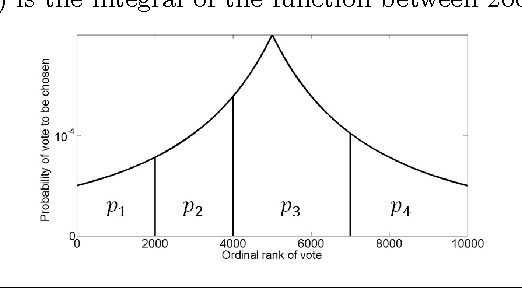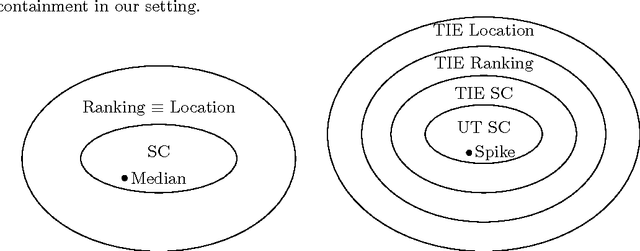Iddan Golomb
Truthful Facility Location with Additive Errors
Jan 02, 2017



Abstract:We address the problem of locating facilities on the $[0,1]$ interval based on reports from strategic agents. The cost of each agent is her distance to the closest facility, and the global objective is to minimize either the maximum cost of an agent or the social cost. As opposed to the extensive literature on facility location which considers the multiplicative error, we focus on minimizing the worst-case additive error. Minimizing the additive error incentivizes mechanisms to adapt to the size of the instance. I.e., mechanisms can sacrifice little efficiency in small instances (location profiles in which all agents are relatively close to one another), in order to gain more [absolute] efficiency in large instances. We argue that this measure is better suited for many manifestations of the facility location problem in various domains. We present tight bounds for mechanisms locating a single facility in both deterministic and randomized cases. We further provide several extensions for locating multiple facilities.
On Voting and Facility Location
Dec 18, 2015



Abstract:We study mechanisms for candidate selection that seek to minimize the social cost, where voters and candidates are associated with points in some underlying metric space. The social cost of a candidate is the sum of its distances to each voter. Some of our work assumes that these points can be modeled on a real line, but other results of ours are more general. A question closely related to candidate selection is that of minimizing the sum of distances for facility location. The difference is that in our setting there is a fixed set of candidates, whereas the large body of work on facility location seems to consider every point in the metric space to be a possible candidate. This gives rise to three types of mechanisms which differ in the granularity of their input space (voting, ranking and location mechanisms). We study the relationships between these three classes of mechanisms. While it may seem that Black's 1948 median algorithm is optimal for candidate selection on the line, this is not the case. We give matching upper and lower bounds for a variety of settings. In particular, when candidates and voters are on the line, our universally truthful spike mechanism gives a [tight] approximation of two. When assessing candidate selection mechanisms, we seek several desirable properties: (a) efficiency (minimizing the social cost) (b) truthfulness (dominant strategy incentive compatibility) and (c) simplicity (a smaller input space). We quantify the effect that truthfulness and simplicity impose on the efficiency.
 Add to Chrome
Add to Chrome Add to Firefox
Add to Firefox Add to Edge
Add to Edge